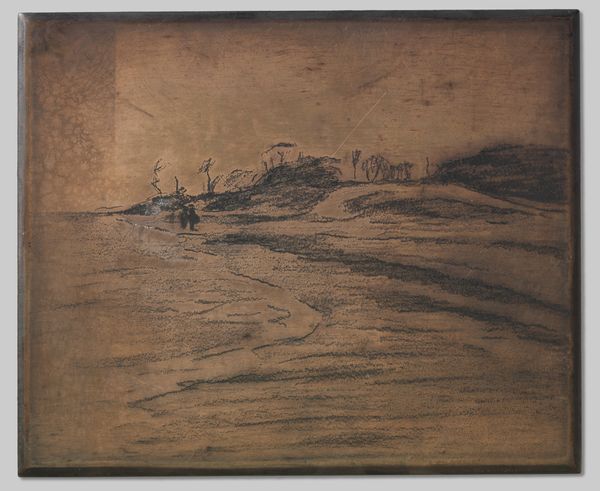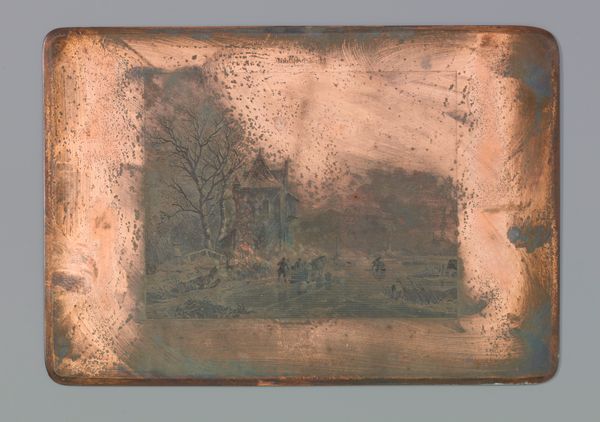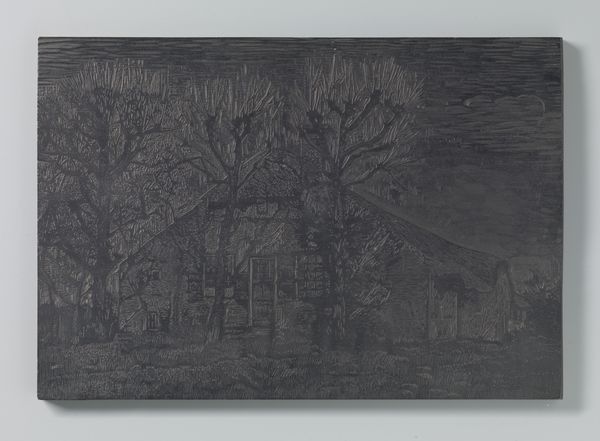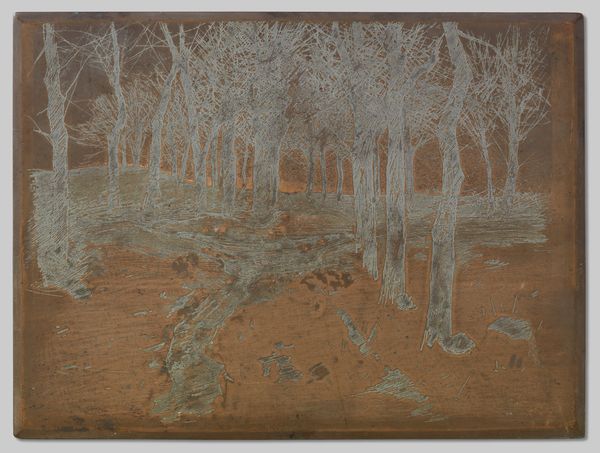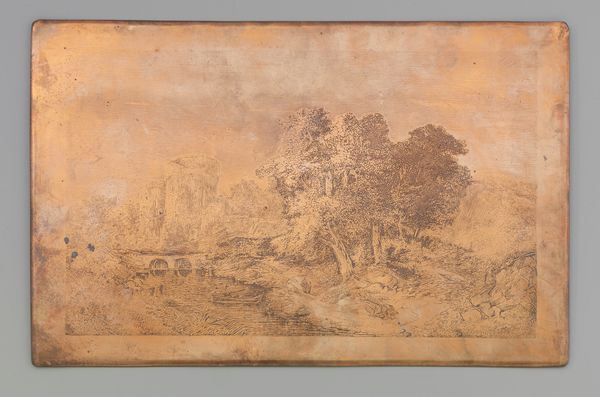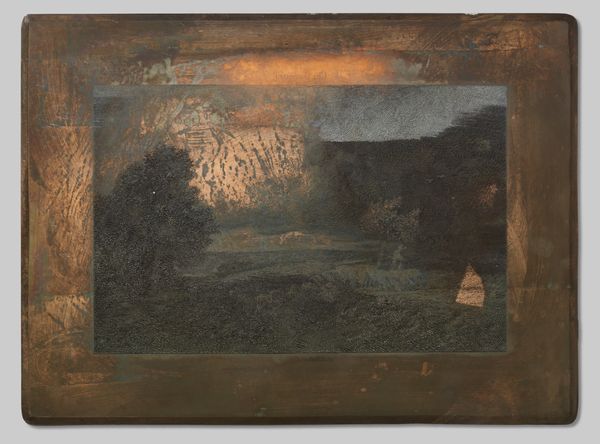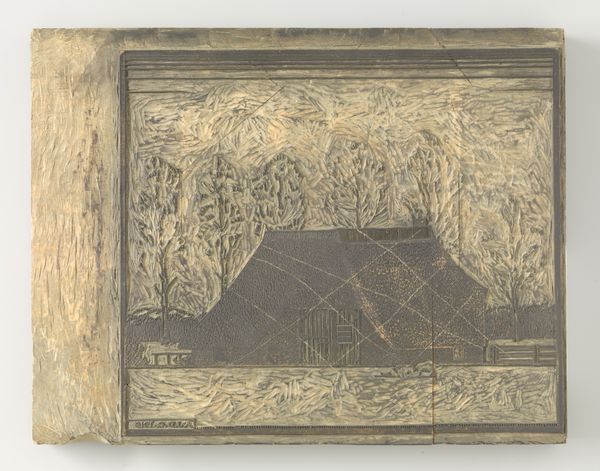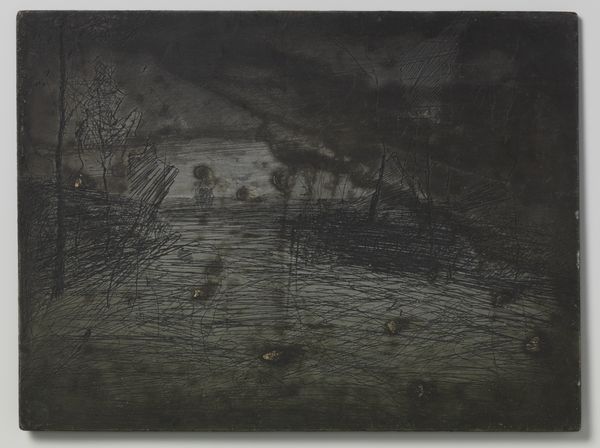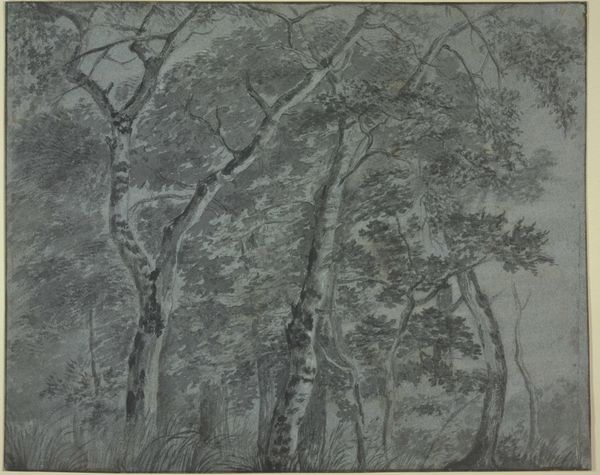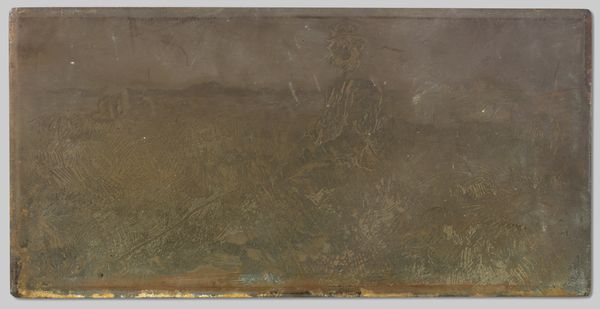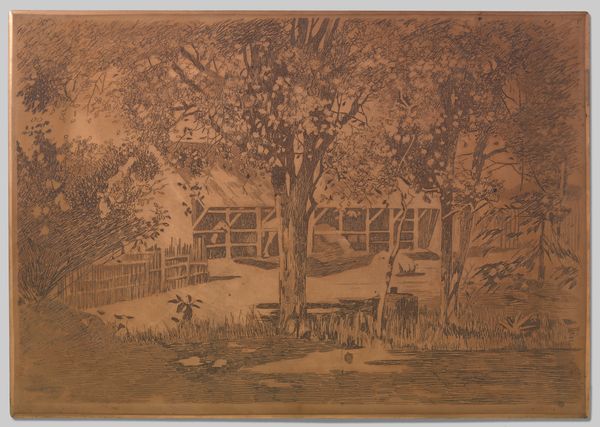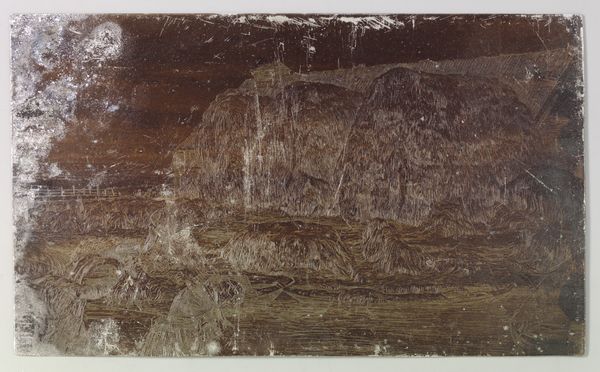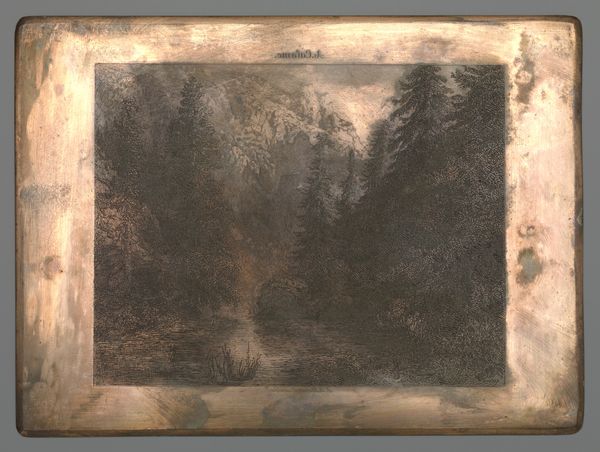
drawing, print, etching
#
drawing
# print
#
etching
#
landscape
#
coloured pencil
Dimensions: height 139 mm, width 200 mm
Copyright: Rijks Museum: Open Domain
Curator: Looking at Willem Witsen's etching, titled "Duinwegje," created in 1887, one immediately gets a sense of stark solitude. Editor: It’s interesting that you say "solitude" because my first impression is constraint—that reddish-brown tone hems everything in. It feels like a world limited by sepia tones. Curator: Perhaps. Let's consider that this work is housed at the Rijksmuseum; Witsen captures a specific place, likely in the Netherlands. The landscape traditions there often invoke the cultural sense of place. Notice how the sandy path cuts sharply through the frame. Editor: Absolutely. This path, in relation to the muted colors, reminds me of Dutch landscape painting. The limited color palette reinforces this impression, doesn't it? How it invokes history? Curator: In terms of symbol, that pathway almost invites reflection. Given the prevalence of this symbol in art and the humanities, the work could evoke the journey of life or, perhaps, self-discovery. Editor: True, but it's also tempting to think about urbanization during that era. How does Witsen engage with the rapidly changing landscape during his time? Does it symbolize progress or loss? Curator: Possibly both. While this etching emphasizes a seemingly untouched path, there's a fence subtly placed, which might indicate land ownership or encroaching civilization. This speaks to the duality of progress. Editor: An interesting reading! Looking closer, one notices it is an etching and a print; how do the multiple reproduction options affect access and cultural relevance? Curator: Indeed. Its very nature as a print broadens distribution; so does its imagery reinforce Dutch identity as well as challenge conceptions of their place within progress and the natural world? It offers the opportunity to connect broadly. Editor: Ultimately, Witsen presents us with a moment that invites questions regarding memory, modernity, and change. The pathway, color, and context prompt continuous discussions. Curator: Precisely; the strength of “Duinwegje” lies in its understated capacity to elicit enduring, varied interpretations through shared symbolism.
Comments
No comments
Be the first to comment and join the conversation on the ultimate creative platform.
